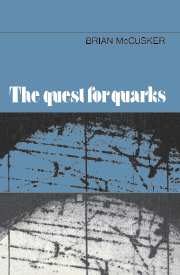
- Cited by 5
-
Cited byCrossref Citations
This Book has been cited by the following publications. This list is generated based on data provided by Crossref.
Scalera, G. C. 1988. The Nature of Quantum Paradoxes. p. 131.
Jørgensen, Christian K. and Kauffman, George B. 1990. Noble Gas and High Temperature Chemistry. Vol. 73, Issue. , p. 227.
Grace, Randolph C. 2001. On the Failure of Operationism. Theory & Psychology, Vol. 11, Issue. 1, p. 5.
PERL, MARTIN L. LEE, ERIC R. and LOOMBA, DINESH 2004. A BRIEF REVIEW OF THE SEARCH FOR ISOLATABLE FRACTIONAL CHARGE ELEMENTARY PARTICLES. Modern Physics Letters A, Vol. 19, Issue. 35, p. 2595.
Kim, Peter C. Lee, Eric R. Lee, Irwin T. Perl, Martin L. Halyo, Valerie and Loomba, Dinesh 2007. Search for Fractional-Charge Particles in Meteoritic Material. Physical Review Letters, Vol. 99, Issue. 16,
- Publisher:
- Cambridge University Press
- Online publication date:
- August 2012
- Print publication year:
- 1983
- Online ISBN:
- 9780511599873


